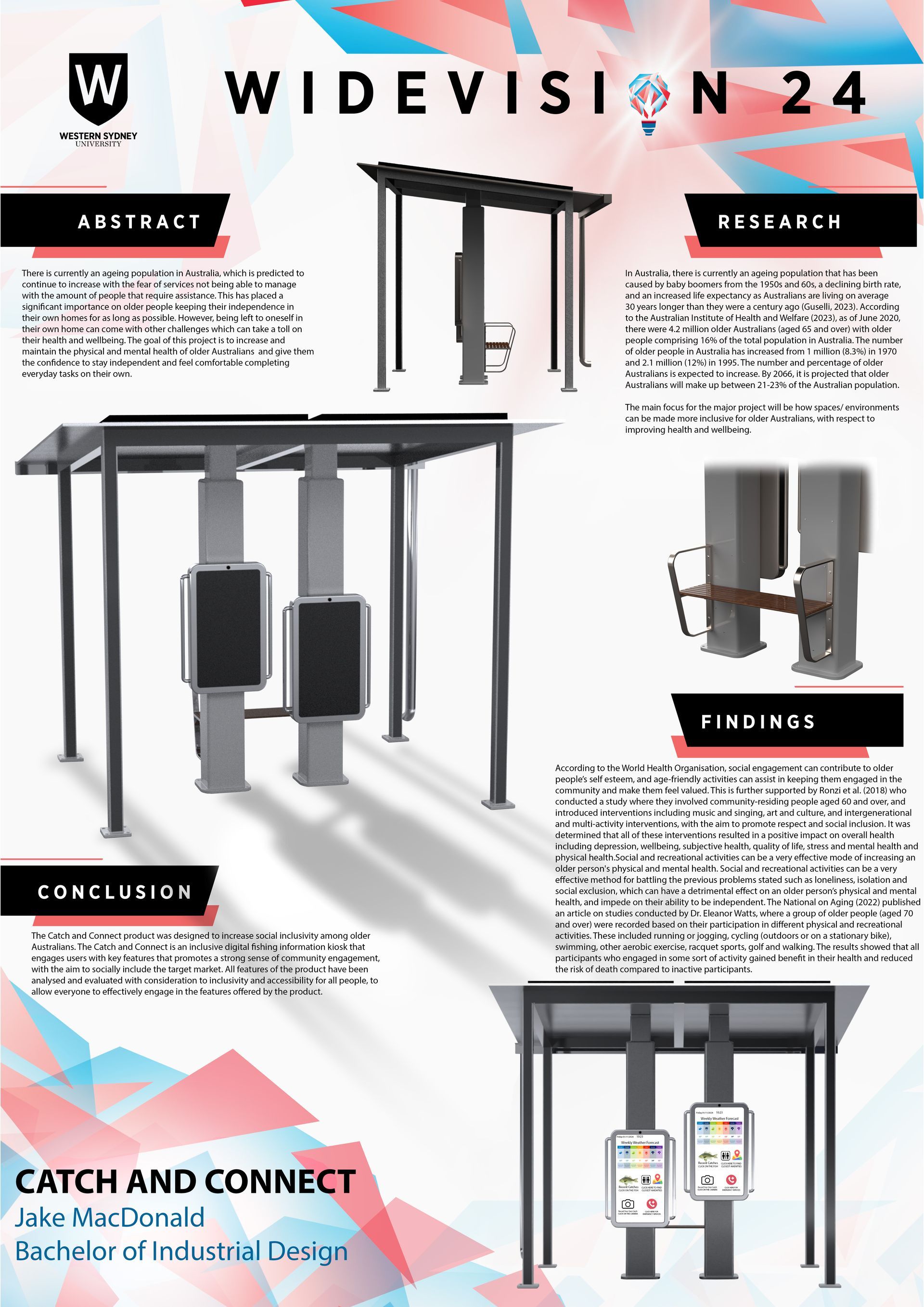Jake MacDonald
Catch and Connect - Inclusive Fishing Information Kiosk
PROJECT
The goal of my major project was to improve upon social inclusivity among older Australian males, and socially engage them with their community, specifically within the Parramatta LGA. Older people are more susceptible to experience feelings of loneliness and social isolation, which can lead to more detrimental mental and physical health issues. Parramatta City Council presented the issue of older males experiencing these feelings of loneliness and social isolation, and the impacts it can have on a persons life, and therefore, want to get more of this demographic involved in social activities across the LGA and keep them engaged in the activity so they continue to attend.
The research question, ‘How can spaces/environments be made more inclusive for older Australians, with respect to improving health and wellbeing?’ was generated as a catalyst to begin research into the topic, and gain knowledge and an understanding of the issue/situation and the target user that was being designed for. A list of design criteria/ product specifications were created to be used as a tool of evaluation and to ensure the design achieved everything it needed.
The Catch and Connect product was proposed as a potential design solution. The Catch and Connect is an inclusive and accessible fishing information kiosk that engages the user with various features that promote a strong sense of community engagement, in order to socially include the target user. The Catch and Connect acts as a digital community board, as it will be placed in popular fishing spots in the LGA, where people can take photos of the fish they catch at the information screen, and share their photos with the rest of the community.
This can spark discussions and connections with people who share hobbies and interests and hopefully build new friendships. Inclusivity and accessibility have been at the forefront of the development of the Catch and Connect, with the design consisting of inclusive screen heights, inclusive seating, safety grab rails, a steel shelter for weather protection and a simple, easy to use interface. The screens will also be powered by solar panels, which will be mounted to the roof of the shelter.

With respect for Aboriginal cultural protocol and out of recognition that its campuses occupy their traditional lands, Western Sydney University acknowledges the Darug, Eora, Dharawal (also referred to as Tharawal) and Wiradjuri peoples and thanks them for their support of its work in their lands in Greater Western Sydney and beyond.
Acknowledgement of Country
Western Sydney University Copyright © 2004-2024 | ABN 53 014 069 881 | CRICOS Provider No: 00917K | TEQSA Provider ID: PRV12061 (Australian University)

